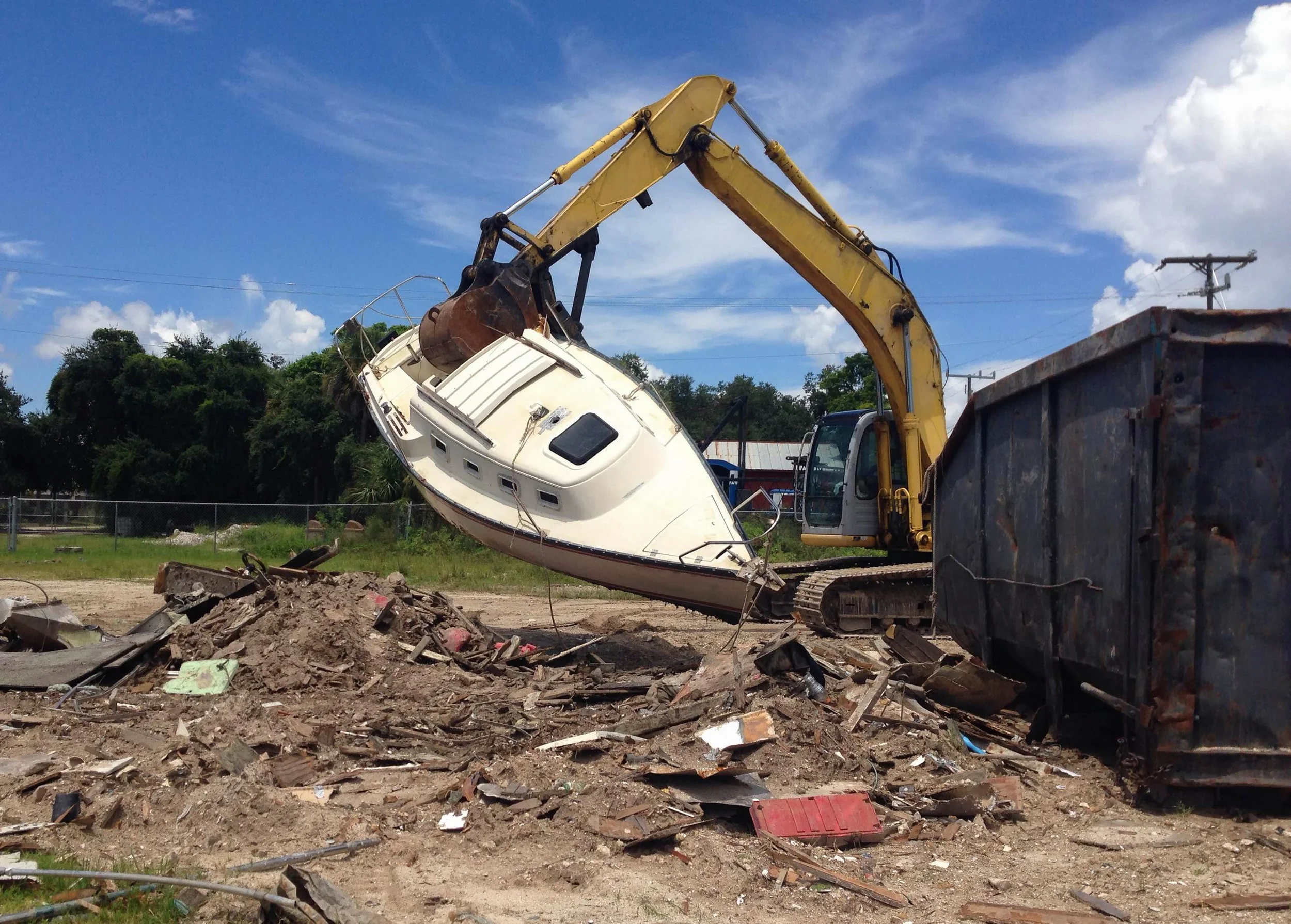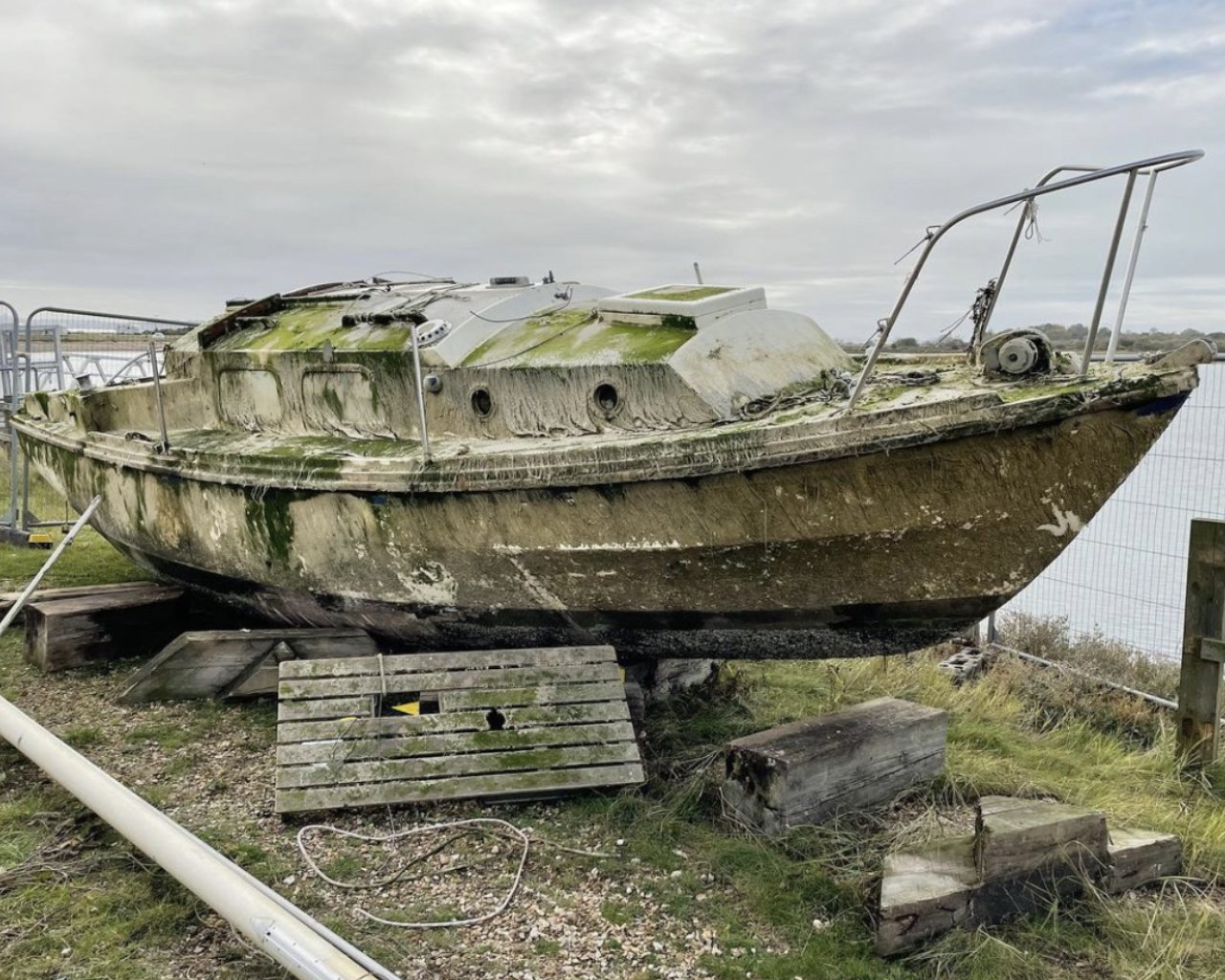Dispatch from the Land of Throwaway Boats
Thanks to Jonathan Klopman a Marine Surveyor from Marblehead, Massachusetts, for allowing us to republish this article. His firm specialises in accident investigation, failure analysis, and expert consulting. The article is obviously U.S. centric and it’s based on references mostly plastic boats, but the values it espouses are right up the SWS alley.
Despite breathless press coverage, the crusade for “carbon neutral boating” seems to be losing steam. Whether it is cost, a lack of viable “clean” watercraft, or the public’s recognition that putting around in a battery powered launch would get old quick, I just don’t see any sign that the green revolution in recreational boating that for the past 10 years was “just over the horizon” is steaming into view.
Even though I have a deep affection for internal-combustion engines, that doesn’t mean I am oblivious to the environmental waste in our industry. I see our impact, but as we look at strategies to reduce it, I fear we are missing the forest for the trees. Pleasure boating, in terms of hours of use per season, has been on the decline for decades. Recent studies peg it at less than 50 hours per year, which means that a BMW X5 with conservation plates and a “The Earth is our Mother “ bumper sticker burns far more gas in a year than the average recreational powerboat.
So, what are we missing? Acknowledging that a boat’s power plant is surrounded by more than a ton of cured polyester resin is a big start. While the enlightened in our industry wring their hands over developing efficient electric propulsion driven by combustible lithium batteries, most of them have no compunction about chopping up thousands of viable hulls every year. There are landfills choked with the skeletons of once proud marques- Hatteras, Bertram, Chris Craft, C&C, Bristol, Pearson. Where are the planet-conscious clean-boating advocates to speak out about this desecration?
The kneejerk answer is that it is simply too expensive to refit older vessels. A quick look at the staggering purchase price of new boats quickly disproves that. The problem is far deeper. While boat restoration is expensive, the real challenge these days is finding a yard that can provide the services ands skills required to meet the task. I have always been proud and grateful for having worked at Graves Yacht Yard, Little Harbor, and the Marblehead Trading Company in Massachusetts. The collaborative effort of being part of a team of committed craftsmen is what convinced me to spend the rest of my working life in the boat business.
The traditional “full service” yard is fast becoming history. Without ambitious projects, yards stagnate and lose skilled crew. Not so many years ago, well-heeled yachtsmen considered themselves patrons, instrumental in supporting an industry. Dodge Morgan was just such a Medici when he commissioned Ted Hood to build the record breaking American Promise at Little Harbor in Marblehead. Everyone in the yard had a feeling that we were doing something special and Dodge was kind and smart enough to never let us forget it. He was a catalyst for attracting and inspiring talent. That old racehorse we built for him is still sailing, now a research vessel dedicated to cleaning garbage from the ocean.
And today? Does anyone really think that the trend of building lightweight multiple outboard center consoles is good for the industry’s sustainability? Last year I looked at a large center console with triple outboards and a cored hull. The outer skin was single layer of 1808- a 1/16” (2mm) glass hull intended to fish offshore at speed. I worked on a 30’ (9.1m) single skin/adhered grid production boat recently with a hull barely over 1/8”/3mm thick (not including the skincoat). I’ve noted that a disturbing trend in building modern sailboats is to glue a molded grid into the bilge using hull and deck putty. Unsurprisingly, when one of these boats hits anything, the hue and cry is to declare it a total loss
We are building throwaway boats, and no one seems to care. No one is going to restore a (insert brand of generic center console) or refit a (insert brand of giant French conglomerate sailboat). The heartbreak is that the trend towards pumping out disposable, labor saving production boats has gone on so long that many service yards are left with crews who can manage only basic maintenance, gelcoat buffing, and hanging outboards.
When the U.S. auto industry flirted with planned obsolescence in the late 1970s and ‘80s, the response from Toyota was to build durable, reliable products. We all know what happened to the market demand for U.S. versus Japanese autos. We need to start convincing the boating public that boats are long-term assets that will retain value. To regain buyer confidence, we have to start building simple, rugged, honest boats again.
We’re told that the modern boater simply doesn’t have the time for boat maintenance and learning operating skills. Boating needs to be easier. Glitchy tech gadgets like joystick controls, gyro stabilizers, and multifunction displays are touted as saviors for our industry. But do we really ned to cater slavishly to the whims of the distracted multitude? Are age-old lessons in seamanship, sailing culture and navigation truly anathema to the modern boater? It seems to me that young boaters with the abilities to succeed in highly technical careers have what it takes to master boat handling. We should emphasize that a relaxing day on the water is an antidote to the stress of office life, not a mirror of its hectic complexity.
Neither the planet nor our industry will be saved by the next new gadget. Despite the potential moral validation, there is no realistic vision that we will be pooting about harbors in the nautical equivalent of Jetson Space Cars. As responsible, environmentally aware marine professionals, we should be fostering the value of maintaining and rejuvenating more of the fine vessels that have already seen yeoman service rather than taking part in their ignoble demise in the rush to connect our customers with new models of dubious virtue or reliability.



